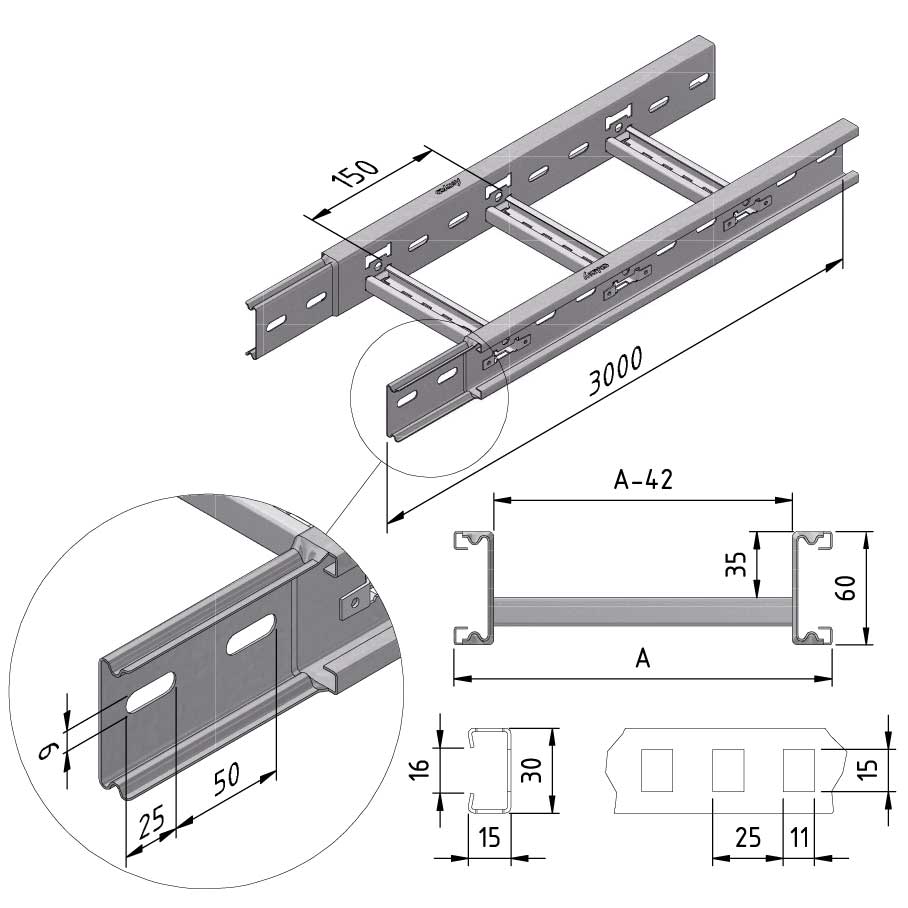Cable ladder fire resistant
FR-CLFI60
Cable ladder fire resistant
FR-CLFI60
| SKU | Article code | Finishing | Dimension A | Usable surface (cm²) | Packaging | |||
|---|---|---|---|---|---|---|---|---|
|
|
19026 |
FR-CLFI60-0200-10-3PG |
PG
|
200
|
55.3
|
3
|
Default
|
|
|
|
19027 |
FR-CLFI60-0300-10-3PG |
PG
|
300
|
90.3
|
3
|
Default
|
|
|
|
19028 |
FR-CLFI60-0400-10-3PG |
PG
|
400
|
125.3
|
3
|
Default
|
|






